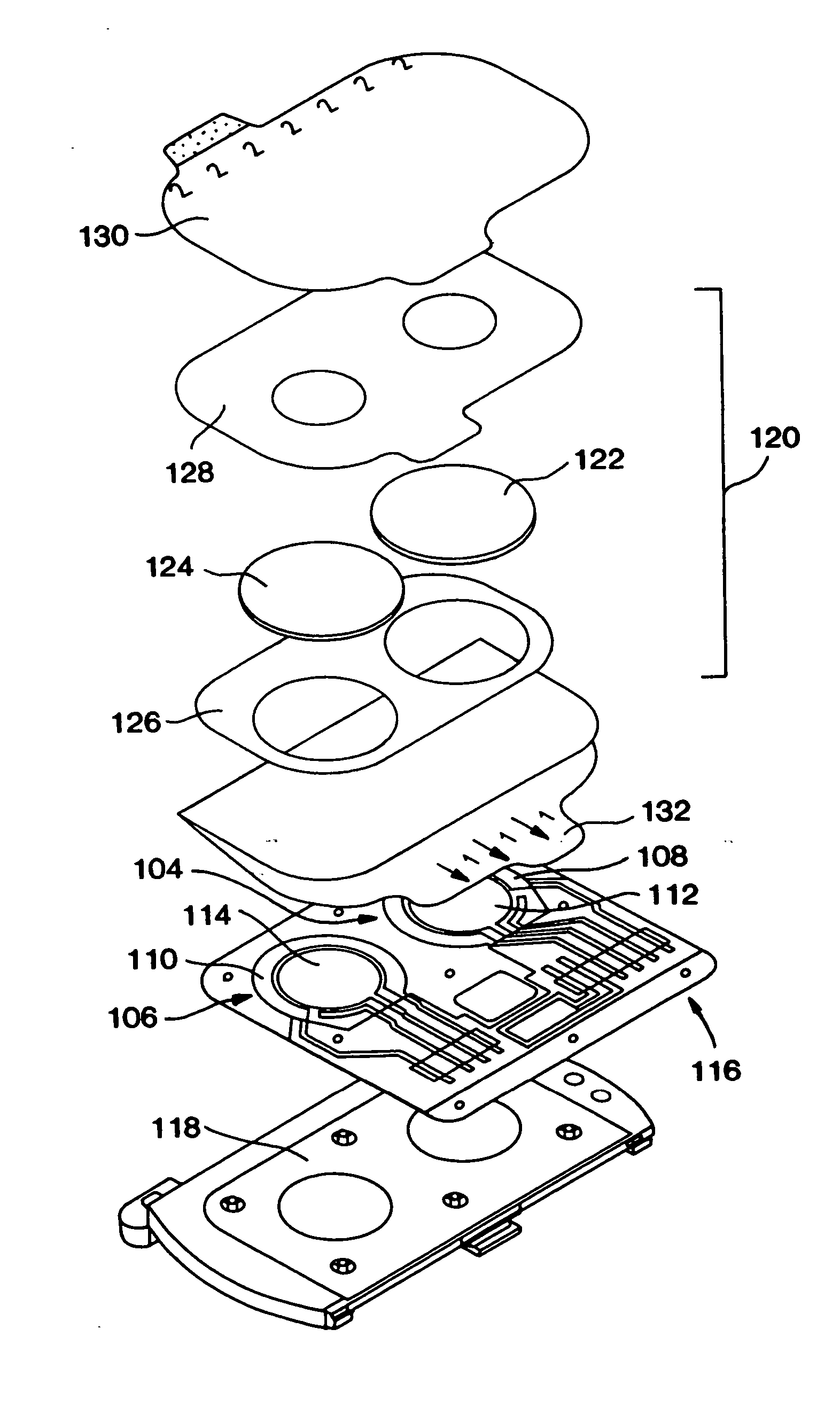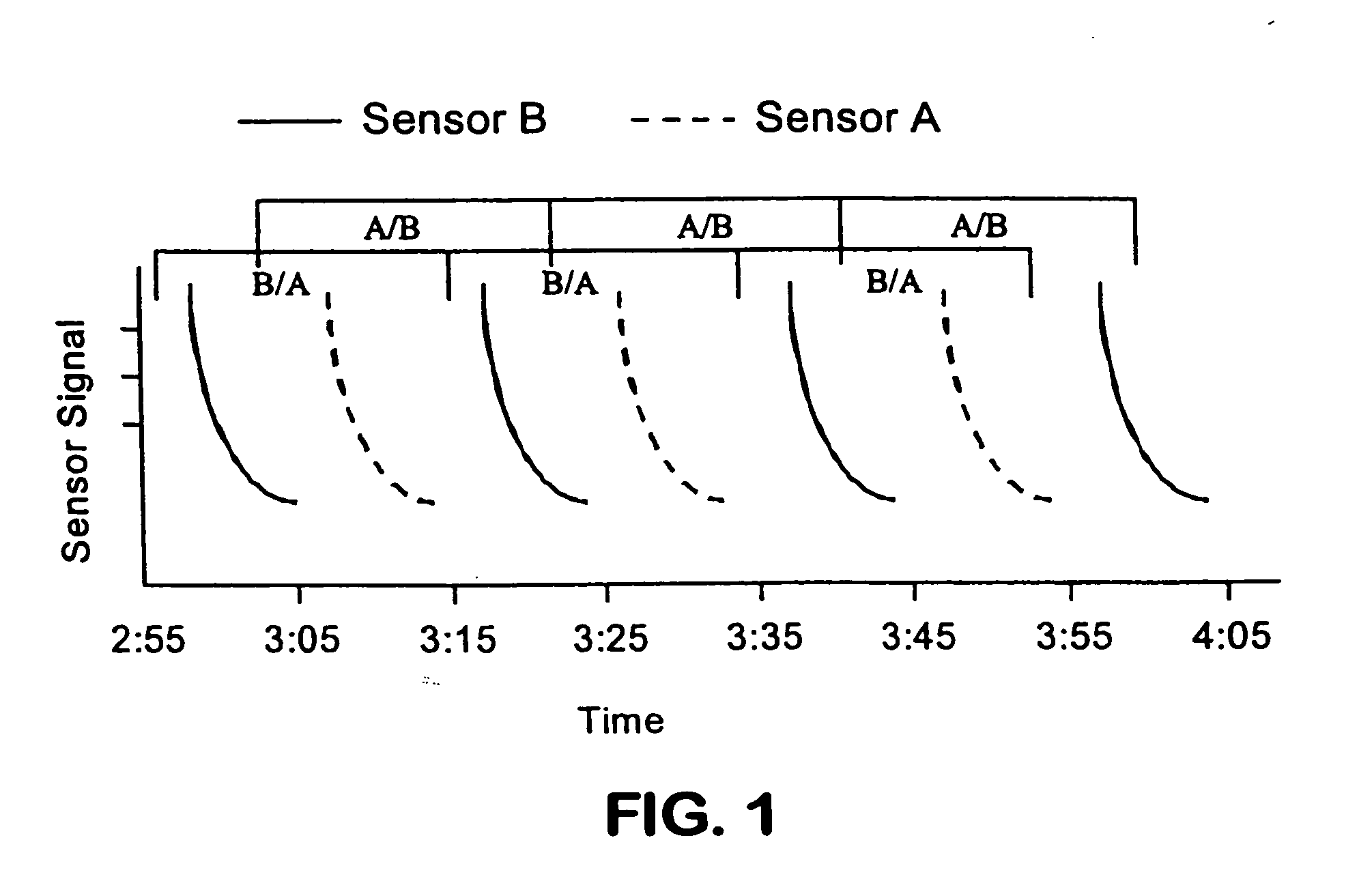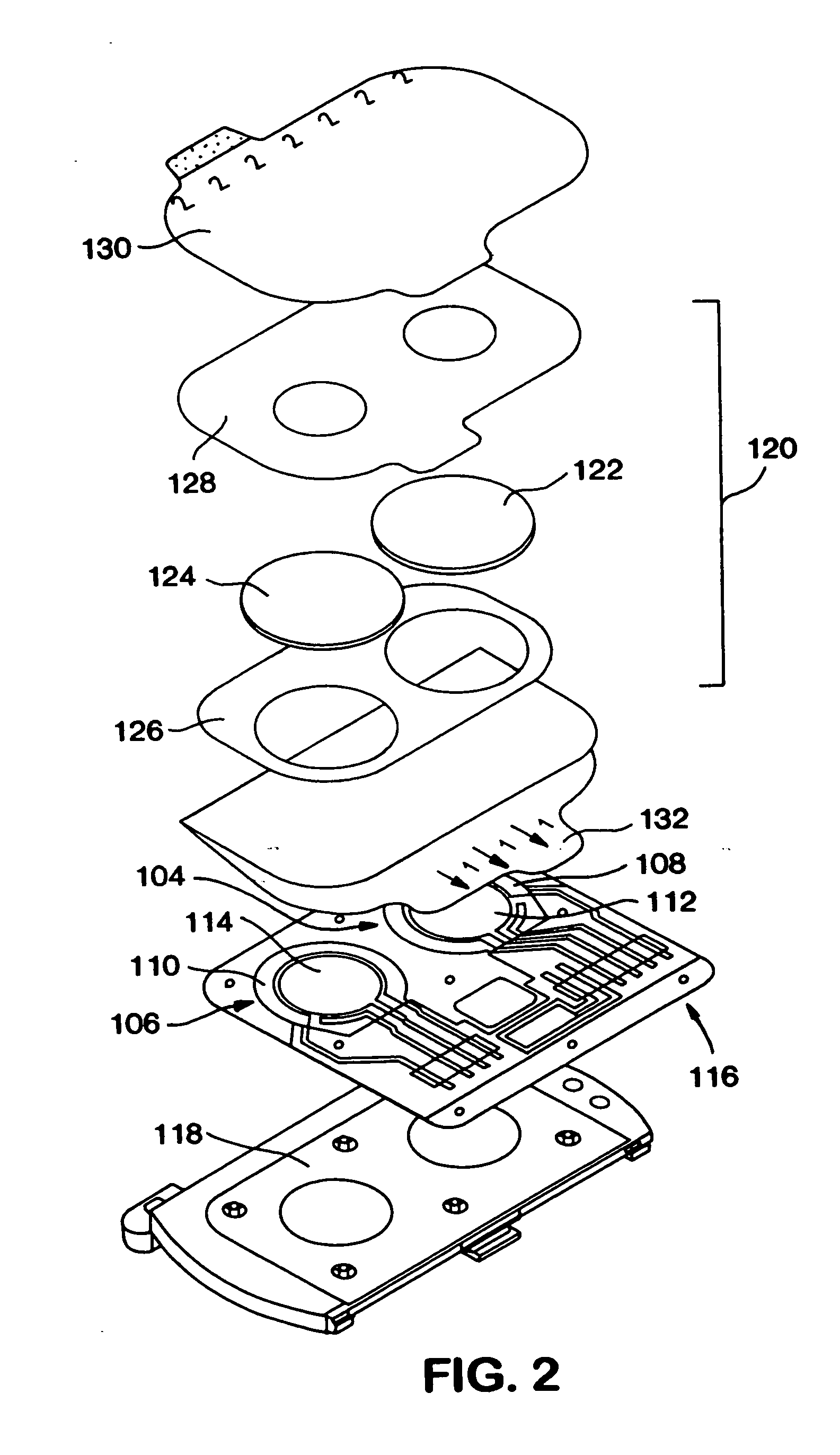Methods for estimating analyte-related signals, microprocessors comprising programming to control performance of the methods, and analyte monitoring devices employing the methods
a technology of analyte and signal, applied in the field of methods for estimating analyte-related signals, can solve the problems of many 7 bg measurements per day not being sufficient to detect a number, most procedures for obtaining such information are invasive, painful, etc., and achieve the effect of reducing the incidence of failed calibration
- Summary
- Abstract
- Description
- Claims
- Application Information
AI Technical Summary
Benefits of technology
Problems solved by technology
Method used
Image
Examples
Embodiment Construction
All publications, patents and patent applications cited herein are hereby incorporated by reference in their entireties.
1. Definitions
It is to be understood that the terminology used herein is for the purpose of describing particular embodiments only, and is not intended to be limiting. As used in this specification and the appended claims, the singular forms “a”, “an” and “the” include plural referents unless the context clearly dictates otherwise. Thus, for example, reference to “a reservoir” includes a combination of two or more such reservoirs, reference to “an analyte” includes mixtures of analytes, and the like.
Unless defined otherwise, all technical and scientific terms used herein have the same meaning as commonly understood by one of ordinary skill in the art to which the invention pertains. Although other methods and materials similar, or equivalent, to those described herein can be used in the practice of the present invention, the preferred materials and methods a...
PUM
 Login to View More
Login to View More Abstract
Description
Claims
Application Information
 Login to View More
Login to View More - R&D
- Intellectual Property
- Life Sciences
- Materials
- Tech Scout
- Unparalleled Data Quality
- Higher Quality Content
- 60% Fewer Hallucinations
Browse by: Latest US Patents, China's latest patents, Technical Efficacy Thesaurus, Application Domain, Technology Topic, Popular Technical Reports.
© 2025 PatSnap. All rights reserved.Legal|Privacy policy|Modern Slavery Act Transparency Statement|Sitemap|About US| Contact US: help@patsnap.com



